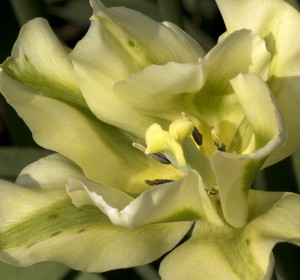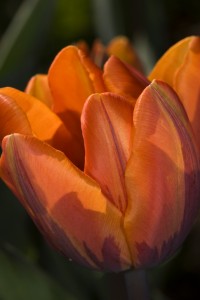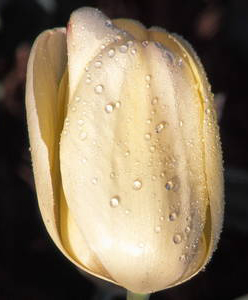Perennial Tulips
Posted in Gardening Tips on November 1 2012, by Sonia Uyterhoeven
Sonia Uyterhoeven is the NYBG’s Gardener for Public Education.

As I mentioned the other week, I have been making the Garden rounds to talk to different colleagues about their favorite bulbs. We often like to use tulips here at the NYBG as part of large annual displays in springtime. We plant the bulbs in November, which then flower in May. By June, they have all been dug up and recycled in the compost pile.
The reason why tulips are not often part of permanent displays is that many varieties don’t come up consistently in subsequent years. They look glorious the first year, spotty the second year, and prove fairly anemic moving into the third and fourth years. Happily, this is not true with all tulips, and many make wonderful, long-lived additions in a garden provided they have good drainage.
I asked Katie Bronson if any of her tulips in the Everett Children’s Adventure Garden come back reliably, and she mentioned that she has had success with a bi-colored tulip called Tulipa ‘Spring Green’, as well as the classic T. ‘Princess Irene’. ‘Spring Green’ flowers in May with ivory petals and a bright green flame (a large streak along the middle of the petal), mixing happily with other pastel shades in the garden.

‘Princess Irene’ is a fragrant, early- to mid-spring tulip that comes straight out of a painting by one of the Dutch masters, displaying a brilliant orange color with a sumptuous purple flame. Brent and Becky’s Bulbs recommend combining it with the ‘Jolly Joker’ pansy for a good color echo, while it also looks wonderful with pale purple-blues such as Viola ‘Sorbet™ Marina Babyface’, which brings out the golden overtones in the orange petals and makes the tulip glisten.
Later, I spoke to Kristin Schleiter, the Director of Outdoor Gardens. She mentioned ‘Spring Green’ as a tulip she has found dependable, and also recommended Tulipa ‘Ivory Floradale’. The latter is a Darwin hybrid that opens up as a nice, soft yellow before maturing to an ivory white, and has lived for an impressive 16 years in Kristin’s home garden.
On the topic of Darwin hybrids, they also tend to perennialize better than most tulips. While Darwin hybrids offer a wonderful selection and it is worth trying all of them, it is worth naming some choice varieties, such as ‘Banja Luka’ with its huge, blood-red and golden petals; ‘Apricot Delight’ with its demure apricot-pink coloring; ‘Big Chief’ with its maxi-blossoms, rosy salmon coloring and creamy base; and ‘Come Back’ with its rich red coloring.
Another Darwin hybrid that I love is ‘Gudoshnik’, not simply because the name just rolls off your tongue, but because it is a natural mix ranging from red to creamy yellow. Every tulip is different, a variation of a solid, striped, or spotted pattern in a blend of red and creamy yellow–in other words, a real beauty.

But this is just the tip of the iceberg in terms of dependable tulips for the garden. Paramount to their success is good drainage. Kristin mentioned that in her own garden, her tulips last the longest when planted in a border where they are tucked into the spaces between her perennials and left undisturbed. In these areas they are safe from damage incurred by a border spade. Many perennial borders are also more self-sufficient and less demanding of frequent watering and fertilizing than annual borders.
Next week, we move on to a fall favorite that is already beginning to flaunt its colors around The New York Botanical Garden: witch-hazel.
‘Ivory Floradale’ photograph courtesy of Brent and Becky’s Bulbs.


Your article is very informative and interesting….packed densely w/ great info and the timing of thinking spring could not be better as I sit in the dark w/o heat:)
Barbara Reiner